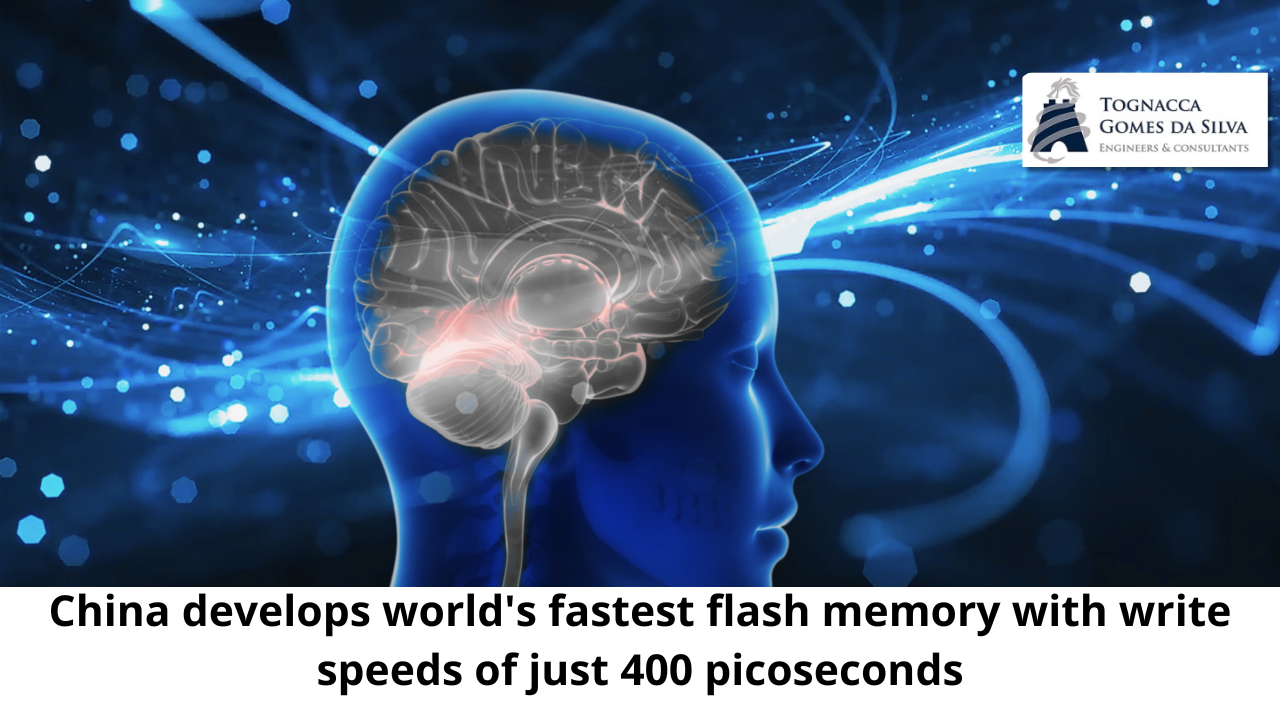A promising technological breakthrough has just emerged from the laboratories of Fudan University in Shanghai. Researchers led by Professor Zhou Peng have developed the world’s first Flash memory capable of writing data in just 400 picoseconds — a time equivalent to one trillionth of a second.
This is an unprecedented innovation in the digital storage industry, with the potential to transform the performance of devices and systems that require real-time response.
Comparison of write speed of current memories vs. PoX (Fudan University)
| Tecnologia de Memória | Tipo | Volátil? | Tempo Médio de Escrita | Velocidade Comparada à PoX |
|---|---|---|---|---|
| PoX (Fudan University) | Flash (nova geração) | Não | 400 picosegundos (0,0004 ns) | — |
| SRAM (Static RAM) | RAM | Sim | 1–2 nanosegundos | ~2.500x mais lenta |
| DRAM (Dynamic RAM) | RAM | Sim | 10–20 nanosegundos | ~25.000x mais lenta |
| SSD com NAND Flash | Flash tradicional | Não | 10–100 microsegundos | ~25.000.000x mais lenta |
| Pendrive / USB comum | Flash tradicional | Não | 0,5–2 milissegundos | ~1 bilhão de vezes mais lenta |
| Disco Rígido (HDD) | Magnético | Não | 5–15 milissegundos | ~37 bilhões de vezes mais lenta |

So, what is a picosecond?
A picosecond (ps) is equal to one trillionth of a second or 0.000000000001 seconds (10⁻¹² s). It is such a tiny time scale that ordinary human actions or even fast electronic processes seem extremely slow in comparison.
To better understand how impressive it is to achieve a writing speed of 400 picoseconds, see the table below comparing the picosecond with other time scales we use in science and everyday life:
Time scale comparison table
| Unidade de Tempo | Símbolo | Equivalência em Segundos | Exemplo de Ocorrência |
|---|---|---|---|
| 1 segundo | s | 1 | Batida do coração humano |
| 1 milissegundo | ms | 0,001 | Ping em rede local com cabo |
| 1 microssegundo | µs | 0,000001 | Tempo de acesso de memórias NAND |
| 1 nanossegundo | ns | 0,000000001 | Sinal eletrônico em CPUs modernas |
| 1 picossegundo | ps | 0,000000000001 | Tempo de comutação do novo chip PoX |
| 1 femtossegundo | fs | 0,000000000000001 | Pulsos de laser ultrarrápidos |
| 1 attossegundo | as | 0,000000000000000001 | Observação do movimento de elétrons |
The scale of this demonstrates how Fudan University’s PoX memory breakthrough is not just a technological leap, but a milestone in the limits of modern physics and engineering.
We’re talking about operations occurring in trillionths of a second, opening the door to a new era of computing performance.
PoX: the new generation of memory chips
The chip, called PoX (Phase-change Oxide), sets a new benchmark in non-volatile memory. Unlike current technologies such as SSDs and flash drives — which operate in micro or milliseconds — PoX performs operations thousands of times faster, retaining data even when the device is turned off.
For comparison purposes, RAM memories such as SRAM and DRAM, although fast, lose all data when there is a power outage. PoX, in turn, combines extreme access speed with data persistence, which makes it ideal for applications in artificial intelligence and high-performance computing.
( fontes: adrenaline )



